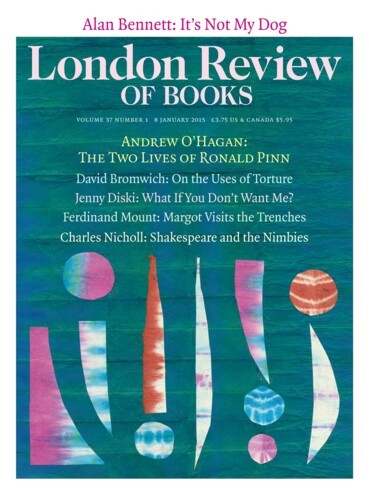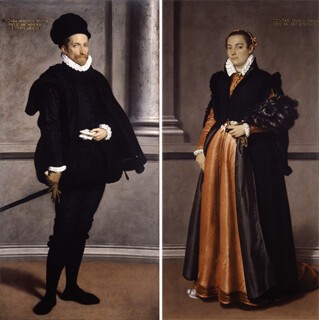The assessment of Giovanni Battista Moroni written in 1648 by Carlo Ridolfi, his first biographer, has never been seriously challenged. Ridolfi says that Moroni, a pupil of Alessandro Moretto of Brescia, had a natural gift for portraiture, and it was through his portraits rather than his religious paintings that his reputation had survived. He adds that portraits do not belong in the first rank of painting, since they do not give the artist full scope to demonstrate his talent, because he is obliged to paint what he sees; but when they are good likenesses and skilfully painted they can only be praised. Ridolfi’s belief that portraiture was inferior to narrative or religious painting was widely shared. Portraiture, in fact, constituted a rather small part of the output of most 16th-century artists, whether in Italy or elsewhere, and the reputation of only a handful of painters was based primarily on their skill as portraitists, the most obvious examples being Holbein and Antonis Mor. In Italy the artist who most conspicuously specialised in portraiture was Moroni, but it is striking that Ridolfi, when writing about his work, didn’t advance one of the then standard views about portraiture, namely that a gifted portraitist should not just provide a likeness, but reveal the positive qualities of the sitter. The popularity of this attitude is understandable, given that most portraits were of the rich and powerful, and flattery was one of the major currencies of social intercourse. Today we are inclined to admire portraits for their supposed honesty and insight, but we are more indulgent with paintings from the past. No one would suppose that portraits by Van Dyck or Reynolds are other than flattering, but they are considered beautiful none the less; and the same is true of those by Titian, who managed to make the rulers he painted uniformly handsome, confident, authoritative and benign, but in ways that seem entirely convincing and unstrained.
Ridolfi implied that Titian greatly admired Moroni, reporting that he advised Venetian officials visiting Bergamo, where Moroni spent most of his career, to have their portraits painted by him, because they were so lifelike. The exceptionally beautiful and intelligently chosen exhibition at the Royal Academy (until 25 January) provides a unique opportunity to appreciate what Titian admired in Moroni. It includes the largest and most impressive group of his portraits ever shown in this country, of which some of the most familiar belong to the National Gallery, together with a representative selection of his religious paintings. As well as providing an unprecedented opportunity to sample the full range of his work it also gives a clear impression of his development, strengths and weaknesses as an artist.
Moroni was born near Bergamo around 1520 and spent most of his life in the immediate vicinity of the city, after training with Moretto, to whom the first room is devoted. This was an intelligent idea, because Moroni’s debt to Moretto was great and decisive for his later career. Moretto was himself a gifted portraitist, one of the first in Italian art to paint full-length portraits. His marvellous half-length portrait from Munich of a man in black against an architectural background demonstrates his skill both in composition and in the depiction of costume. These gifts are also evident in an altarpiece, in which, however, the characterisation of the saints is less impressive.
From Moretto, Moroni acquired great technical skill, a mastery in the rendering of texture, some patterns for portraiture and a series of formulae for religious art which he continued to use throughout much of his career. What he didn’t acquire, and perhaps was incapable of acquiring, was confidence in his capacity for independent invention. As a result, his religious art is unusually derivative, most obviously from Moretto, but also, as the next room makes clear, from Lorenzo Lotto, the leading artist in Bergamo during most of the 1520s. Equally telling is a large Last Supper, derived from an earlier work by Moretto, in which Christ and the apostles are almost entirely devoid of character or expression, whereas the patron, shown in the background in the guise of an innkeeper, is highly individualised and full of life. This contradiction is explained in the catalogue by the suggestion that Christ and the apostles are to be understood as occupying a different plane of reality, existing in the patron’s mind, so to speak. This is ingenious, but if Moroni’s intention in this painting, which was presumably intended to be placed above an altar, was to make the patron the principal figure, more vivid than Christ and his apostles, this would seem to negate the purpose of the picture as religious art.
His later religious paintings are beautifully painted in terms of light and colour, but the figures are without any marked individuality and tend to be anatomically unconvincing. There are attempts in the catalogue to link the bland piety of these works with the ideals of the Counter-Reformation, an idea that gains a certain plausibility from the fact that Moroni was in Trent during some sessions of the Council, although long before the decree on religious images was discussed or promulgated. Unconvincing, however, is the proposal that his religious pictures, and especially those that incorporate donors, in some way reflect recent Jesuit ideas about the desirability of imagining events from the life of Christ. In fact there is nothing novel about the content of these pictures. One showing a donor looking at a representation of St John baptising Christ is not very different in its basic theme from a painting by Titian half a century earlier. Donors were included, as they always had been, in order to invite the spectator to remember them when praying before the image.
As the innkeeper in the Last Supper so clearly shows, Moroni’s great strength was in the representation of living people. This was evident to Ridolfi, and it is evident too from the exhibition, in which pride of place is very properly given to Moroni’s portraits. The earlier ones, produced in Bergamo, are obviously dependent on examples by Moretto, with an unusually high proportion of full-length figures. These usually have impressive if contrived architectural settings, and in terms of colour the pictures are often ravishing. Yet the figures have none of the swagger one finds in later portraits of the rich, such as those by Reynolds, or the apparent self-confidence so evident in the best portraits of Titian. What we see instead are the members of the local aristocracy wearing their best clothes, but frequently looking slightly stiff and ill at ease. Quite often, too, there is a certain lack of confidence in Moroni’s draughtsmanship, so that the more distant shoulder of many of the figures is not entirely convincing.
The problem doesn’t arise in his smaller portraits of less wealthy or vain clients, or of their children. In such pictures he concentrates on the head and shoulders, which are set against plain backgrounds. These images are astonishing in their directness and apparent honesty. In Moroni’s later years, perhaps in part because the aristocratic families of Bergamo who had provided his most enthusiastic patrons were involved in violent feuds, he moved back to his birthplace of Albino, a small town nearby. Here he continued to produce portraits for the rest of his life, which are among the most beautiful to survive from the 16th century. They include a pair of full-length portraits, of Bernardo Spini and his wife, Pace Rivola Spini, which are much more muted in tone than those he had produced before, and are without some of the ostentation of the early ones. In most of the late portraits the setting is reduced to a plain background, enlivened only by a very subtle rendering of the fall of light, and the sitters, who tend to be dressed less flashily than those in Bergamo, are often shown in the same chair, holding the same book. In their evident realism, these portraits have often been regarded as anticipating the work of Caravaggio or Velázquez, but a more relevant parallel, in terms of the attention given to every detail, the perfect balance of the design and the intensity of the observation, would be with Ingres. The most memorable image in the show, and worth a visit on its own, is the wonderfully preserved portrait from a private collection of Giovanni Gerolamo Albani, a formidable old man in a black and evidently expensive fur-lined coat, seated facing out of the picture. Albani shortly afterwards became a cardinal, but Moroni took just as much care with his portrayal of someone socially much less prominent, the tailor depicted in a famous painting from the National Gallery. Without flattering or patronising his sitters, his portraits provide a picture of Italian society unmatched in the work of any other artist of his time.
Send Letters To:
The Editor
London Review of Books,
28 Little Russell Street
London, WC1A 2HN
letters@lrb.co.uk
Please include name, address, and a telephone number.


